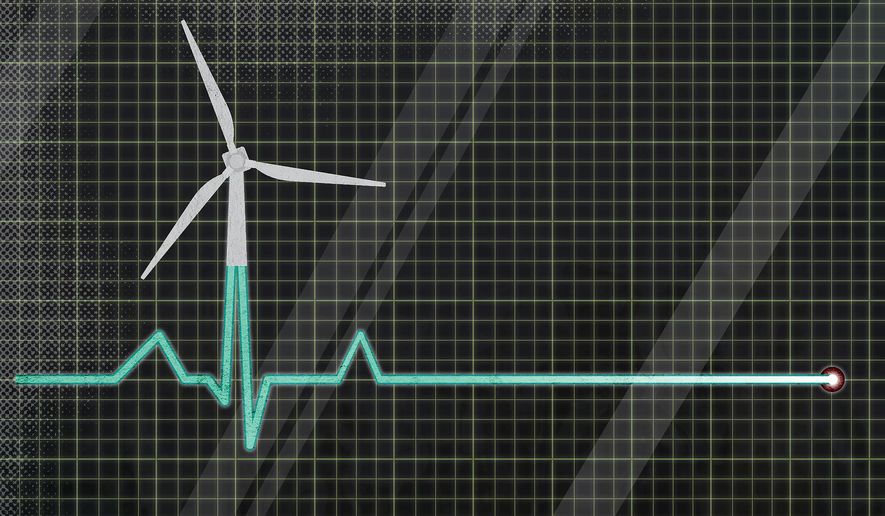OPINION:
Leadership requires able management of momentous issues, and President Biden is clearly laser-focused on the nation’s energy future. But despite his intentions, the president’s plans for a green economy are beginning to resemble the success that comes with pushing a string. Futility in supplying the lifeblood of modern civilization sets the stage for a Biden energy calamity.
Recent testimony in a Senate Committee on Energy and Natural Resources hearing warned of such an eventuality. “I’m really afraid to say that I think the United States is heading for a very catastrophic situation in terms of reliability — hope it doesn’t happen, but I think we’re heading for potentially catastrophic consequences,” said Federal Energy Regulatory Commission member Mark Christie.
As a member of the organization that regulates the transmission, transportation and sales of the nation’s energy resources, Mr. Christie went on to cap his dire scenario with its cause: “The core of the problem is actually very simple. We are retiring dispatchable generating resources at a pace and in an amount that is far too fast and far too great, and it is threatening our ability to keep the lights on.”
Subsequently, the Environmental Protection Agency announced plans to reduce power sector emissions by 617 million metric tons through 2042. If implemented, the proposal would force coal- and natural gas-burning utilities to cut emissions by 90%. That would be possible only with the addition of prohibitively expensive carbon-capture equipment. Consequently, most plants would be forced to close, which is the obvious intent.
With customers already subjected to average annual power failures of eight hours nationwide in 2020, their highest recorded levels, abrupt shuttering of coal- and gas-powered facilities threaten to make blackouts a common occurrence. In years to come, more critical than pondering when to recharge their expensive electric vehicles, Americans would be left to wonder whether their lights and air conditioning will function on any given day.
The EPA’s plans appear to subvert long-range energy forecasts, which project a near doubling of electric grid capacity by 2050, according to the Energy Information Administration. In accordance with Mr. Biden’s mandates, most of the new capacity is expected to be generated by renewable energy technologies. Whether these sources — primarily wind and solar — can match the coming carbon-based losses is an open question.
Moreover, electricity transmission infrastructure must expand by 60% in the next seven years and triple by 2050, the Department of Energy reports, if it is to adequately distribute across the nation new green energy necessary to replace fossil-fuel-consuming power plants.
That’s why negotiations between Congress and the White House over raising the national debt limit reportedly include side discussions of energy funding. Democrats want money for new transmission lines required to meet their carbon-free craving in exchange for expedited approval of new gas and oil drilling projects that Republicans hope can help keep the lights on.
Mr. Biden is gambling America’s energy future, it’s worth recalling, to prevent a few thousandths of a degree of global warming in 2100. If his schemes ultimately produce an energy catastrophe, posterity would rightly conclude that seldom has so much exertion been expended for so little benefit.




Please read our comment policy before commenting.